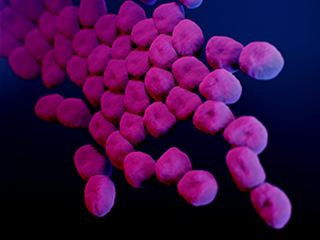Quantitative and Evolutionary Ecology of Communities Group
Members

Doctorante
UCBL

Professeure des universités
VetAgro-Sup
Tel: 33 04 72 43 27 56

Directeur de recherche
CNRS
Tel: 33 04 72 43 27 57

Doctorant
UCBL
Tel: 04 72 44 81 42

Doctorant
CNRS
Tel: 04 72 44 81 42
Doctorant
VetAgro-Sup

Maître de conférences
UCBL
Tel: 04 72 44 81 42
Doctorant
UCBL


Professeur des universités
UCBL
Tel: 33 04 72 43 27 56

Professeur des universités
UCBL

Directeur de recherche
CNRS
Tel: 33 04 72 43 27 56

Maîtresse de conférences
UCBL
Tel: 33 04 72 43 29 02
Maître de conférences
UCBL
Tel: 33 04 72 43 29 02

Our research activities, focused on interspecific interactions (community ecology), aim to better understand the ecological and evolutionary processes structuring species assemblages and biodiversity at different temporal and spatial scales. Our team addresses these major issues using contrasting biological models (communities of large African mammals, insects, microbiota, plants) from 3 complementary angles:
- Our work is strongly anchored in the conceptual framework of evolutionary biology by studying (i) the diversity of adaptive responses implemented by organisms to selective pressures in their environment, (ii) their consequences on population demography and ultimately (iii) the dynamics and composition of species communities.
- Our research is closely linked to societal issues of biodiversity conservation and management by integrating both the functioning of socio-ecological systems and the context of climate change. We conduct experimental studies, manage and ensure the long-term monitoring of several community observation networks.
- Methodological issues also occupy a central place in our team, with the development of new tools for statistical processing and modeling of ecological data. This activity leads to the development of methods and software that we develop and distribute freely.
Research programs

Functioning of African savanna communities
The Hwange LTSER (Long-Term Socio-Ecological Research site in Zimbabwe hosts a long-term interdisciplinary research program that focuses on the functioning of plant and animal communities within the Hwange National Park and the interactions between this protected area and humans living in its periphery. Based on this program, three axes are developed: (1) studying the population dynamics of elephants, exploring their impact and that of management policies on the socio-ecosystem functioning; (2) Understanding the extent to which interactions within and between trophic levels are sensitive to management actions (e.g. sport hunting, water management) and climate change; (3) Decoding human ecology and human-wildlife coexistence mechanisms towards integrated conservation and sustainable functioning of the socio-ecosystem. This research is complemented by more recent works in the Hluhluwe-iMfolozi Park and in the Madikwe reserve in South Africa, which focus on the role of environmental conditions on the hunting success of large African carnivores. We work in close collaboration with the IRL (International Research Lab) Rehabs.
Involved group members : Alice Bernard, Laura Lacomme, Aïssa Morin, Lisa Nicvert, Elie Pedarros, Yolan Richard, Marion Valeix*

Masting and the community dynamics of seed consumers
Masting is a reproductive strategy often encountered in perennial plants, characterized by fructifications highly fluctuating in time and being synchronized at the population level. The seeds produced that way constitute a pulsed resource with a strong impact on the eco-evolutionary dynamics of seed-consuming communities and forest regeneration. Our lack of knowledge of this system still impedes our understanding of the dynamics of temperate forest ecosystems and its future in the context of climate change. Our work carried out on oak forests aims to better understand (i) the proximal causes of masting, (ii) the mechanisms underlying the coexistence of species competing for such highly fluctuating resource and (iii) the co-evolution of consumer exploitation strategies for the fluctuating resource and forest tree fruiting strategies. On the basis of the results obtained, scenarii will be proposed on the future of forest regeneration under climate change, that may serve forest management.
Involved group members : Marie-Claude Bel-Venner*, Emilie Fleurot, Léa Keurinck, Jean Lobry, Samuel Venner

The spread of antibiotic resistance genes in bacteria
Antibiotic resistance is recognized as one of the greatest current threats to human health, and the mobile genetic elements (MGEs) that circulate in bacterial populations and communities are the main vehicles. To understand the dynamics and diversity of MGEs in bacterial pangenomes and the emergence of antibiotic resistance genes, we propose to go beyond the framework of conventional genomics by considering pangenomes as complex ecological communities. In the Ab-One program, we mobilize the concepts and tools developed in community ecology based on an integrative approach (monitoring of bacterial populations/communities evolving in contrasting environments -One-Health approaches-, pan-genomic analyses, experimentation in molecular and cellular microbiology, mathematical modelling). This program is currently focused on the dynamics of MGEs in Acinetobacter baumannii, an antibiotic-resistant microorganism classified as a priority by the WHO. Other more general approaches will illustrate the relevance of this new conceptual framework to understand the dynamics and diversity of MGEs in bacterial pangenomes. This program, co-piloted by our team and a team from CIRI (Horigene) involves the participation of 9 organizations (6 from Lyon -LBBE, CIRI, MMSB, HCL, LEM, VetAgro Sup-, Institut Pasteur (Paris), LMGM (Toulouse ), Robert Koch Institute (Germany)).
Involved group members : Stéphane Dray, Rémi Tuffet, Samuel Venner*

Statistical analysis of ecological data
Understanding the structure and dynamics of species assemblages, and the processes behind them, requires collecting data that are becoming increasingly complex owing to the sophisticated technological developments made available for their acquisition (e.g. GPS, loggers, satellite imagery, molecular data). We are developing new methods for analysing such data, that provide new insights into the ecological processes at work in communities. Multivariate analysis methods allow the analysis of spatial structures, accounting for various information on species (functional traits, morphology, phylogeny), the spatio-temporal variation of species-environment relationships or the multifaceted perception of the protected human-environment relationship. We also model multi-'omics' dose-response data within communities in order to better understand the Adverse Outcome Pathway (AOP) and to better appreciate the risks to the environment. These methodological innovations are made available to the scientific community through the development, distribution and maintenance of software (libraries for the R language: ade4, adegraphics, adephylo, ade4TkGUI, nlstools, fitdistrplus, DRomics, seqinr).
Involved group members: Marie Laure Delignette-Muller, Stéphane Dray*, Jean Lobry, Jean Thioulouse.
Publications
Display of 181 to 210 publications on 656 in total
Disentangling the processes driving tree community assembly in a tropical biodiversity hotspot (New Caledonia)
Journal of Biogeography . 46 ( 4 ) : 796-806
DOI: 10.1111/jbi.13535
Journal article
see the publicationDistinguishing the signatures of local environmental filtering and regional trait range limits in the study of trait–environment relationships
Oikos . 128 ( 7 ) : 960-971
DOI: 10.1111/oik.05851
Journal article
see the publicationA new multi-species method to correct for sampling bias in presence only niche models, and its application to Pl@ntNet citizen science data in France
ESA 2019 - Annual Meeting of the Ecological Society of America .
Conference paper
see the publicationDeterministic processes drive functional and phylogenetic temporal changes of woody species in temperate forests in Northeast China
Annals of Forest Science . 76 ( 2 ) : 42
Journal article
see the publicationPhylogenetic diversity in the Western Ghats biodiversity hotspot reflects environmental filtering and past niche diversification of trees
Journal of Biogeography . 46 ( 1 ) : 145-157
DOI: 10.1111/jbi.13464
Journal article
see the publicationWhat makes a weed a weed? A large-scale evaluation of arable weeds through a functional lens
American Journal of Botany . 106 ( 1 ) : 90-100
DOI: 10.1002/ajb2.1213
Journal article
see the publicationAssessment of diagnostic tests in the absence of a gold standard: a Bayesian approach simultaneously using latent class and mixture models for the diagnosis of bovine dictyocaulosis
BAYES2019 Lyon: Bayesian Biostatistics .
Conference paper
see the publicationMicrobial cross-feeding promotes multiple stable states and species coexistence, but also susceptibility to cheaters
Journal of Theoretical Biology . 465 : 63-77
Journal article
see the publicationAssessing potential surrogates of macroinvertebrate diversity in North-African Mediterranean aquatic ecosystems
Ecological Indicators . 101 : 324-329
Journal article
see the publicationFlower phenology as a disruptor of the fruiting dynamics in temperate oak species
New Phytologist . 225 ( 3 ) : 1181-1192
DOI: 10.1111/nph.16224
Journal article
see the publicationApproche de Modélisation Hiérarchique pour la Description de l'Effet de la Compétition Interspécifique sur la Tolérance Chimique d'Herbacées
SEFA 2019 Lyon .
Conference paper
see the publicationPhenotypic plasticity in the invasive pest Drosophila suzukii: activity rhythms and gene expression in response to temperature
Journal of Experimental Biology . 222 : jeb199398
DOI: 10.1242/jeb.199398
Journal article
see the publicationOutils d'observation des boiteries
Journées Nationales des Groupements Techniques Vétérinaires (JNGTV) . : np
Poster
see the publicationTesting the Mantel statistic with a spatially‐constrained permutation procedure
Methods in Ecology and Evolution . 10 ( 4 ) : 532-540
Journal article
see the publicationPollen limitation as a main driver of fruiting dynamics in oak populations
Ecology Letters . 22 ( 1 ) : 98-107
DOI: 10.1111/ele.13171
Journal article
see the publicationImportance de la variabilité intraspécifique de la polluosensibilité pour l’évaluation du risque ecotoxicologique basée sur l’approche SSD (Species Sensitivity Distribution)
38ème colloque de l’Association des Diatomistes de Langue Française (ADLaF) .
Conference paper
see the publicationNine Quick Tips for Analyzing Network Data
PLoS Computational Biology . 15 ( 12 ) : e1007434
Journal article
see the publicationDiversity indices for ecological networks: a unifying framework using Hill numbers
Ecology Letters . 22 ( 4 ) : 737-747
DOI: 10.1111/ele.13221
Journal article
see the publicationSpatial analyses of multi-trophic terrestrial vertebrate assemblages in Europe
Global Ecology and Biogeography . 28 ( 11 ) : 1636-1648
DOI: 10.1111/geb.12981
Journal article
see the publicationModelling of omics dose-response data for ecological risk assessment
Journées du GDR Ecologie Statistique (EcoStat) .
Conference paper
see the publicationNew goodness-of-fit plots for censored data in the package fitdistrplus
7ème rencontres R .
Conference paper
see the publicationBoundary constraints on population dynamics in a percolating habitat
Ecological Complexity . 36 : 230-238
Journal article
see the publicationOverview of GeoLifeCLEF 2018: location-based species recommendation
CLEF 2018 - Conference and Labs of the Evaluation Forum . 2125 ( 8 )
Conference paper
see the publicationTwo dimensions define the variation of fine root traits across plant communities under the joint influence of ecological succession and annual mowing
Journal of Ecology . 106 ( 5 ) : 2031 - 2042
Journal article
see the publicationA deep learning approach to Species Distribution Modelling
Multimedia Tools and Applications for Environmental & Biodiversity Informatics . 978-3-319-76444-3 : 169-199
Book chapter
see the publicationWhat makes trait-abundance relationships when both environmental filtering and stochastic neutral dynamics are at play?
Oikos . 127 ( 12 ) : 1735-1745
DOI: 10.1111/oik.05398
Journal article
see the publicationEcological and biogeographical drivers of freshwater green algae biodiversity: from local communities to large-scale species pools of desmids
Oecologia . 186 ( 4 ) : 1017-1030
Journal article
see the publicationecolottery : Simulating and assessing community assembly with environmental filtering and neutral dynamics in R
Methods in Ecology and Evolution . 9 ( 3 ) : 693-703
Journal article
see the publicationFunctional rarity of coral reef fishes at the global scale: Hotspots and challenges for conservation
Biological Conservation . 226 : 288-299
Journal article
see the publicationPollen limitation as a main driver of fruiting dynamics in oak populations
Ecology Letters . 22 ( 1 ) : 98-107
DOI: 10.1111/ele.13171
Journal article
see the publication
You also, comment on this article